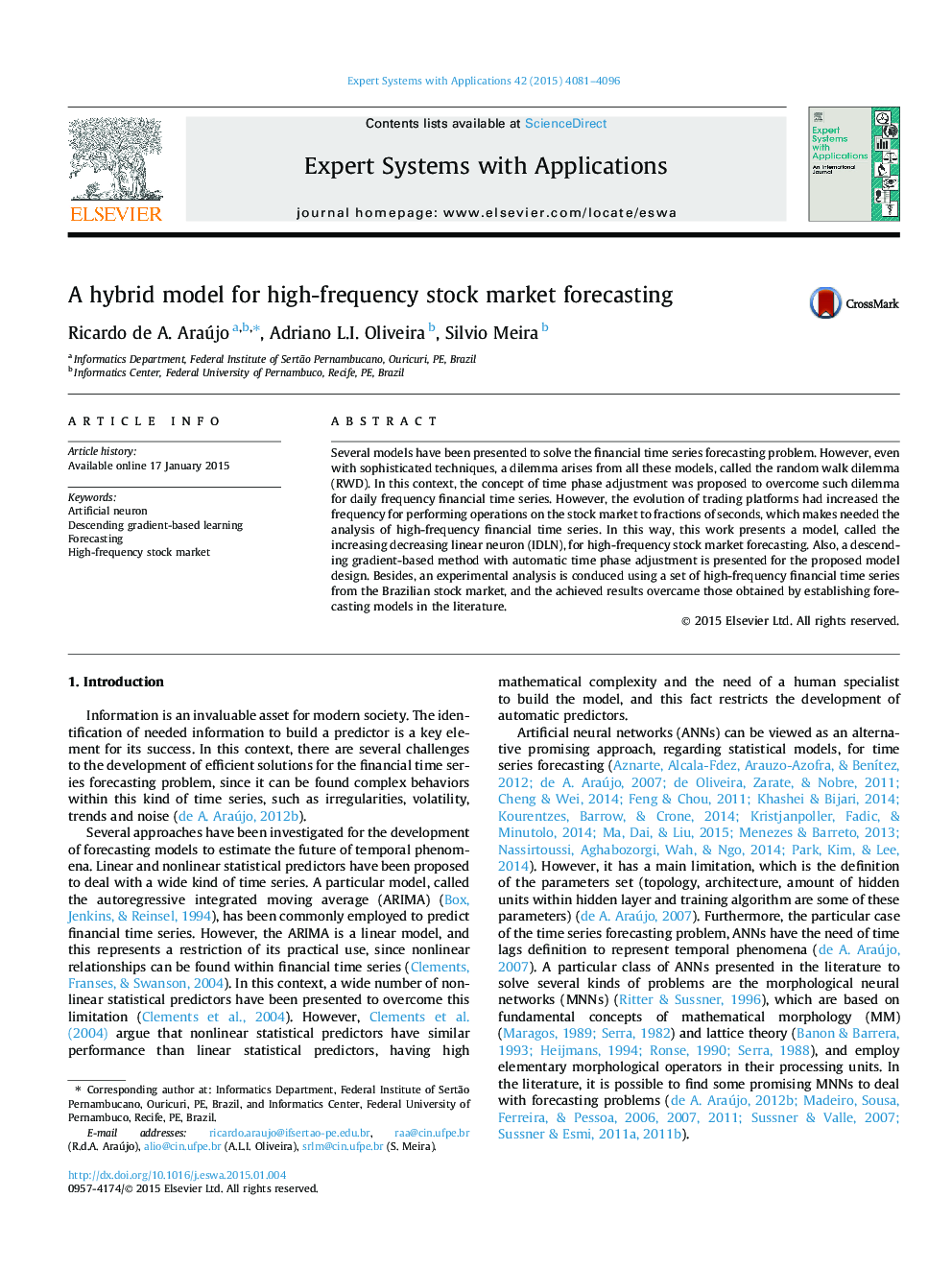| Article ID | Journal | Published Year | Pages | File Type |
|---|---|---|---|---|
| 10322822 | Expert Systems with Applications | 2015 | 16 Pages |
Abstract
Several models have been presented to solve the financial time series forecasting problem. However, even with sophisticated techniques, a dilemma arises from all these models, called the random walk dilemma (RWD). In this context, the concept of time phase adjustment was proposed to overcome such dilemma for daily frequency financial time series. However, the evolution of trading platforms had increased the frequency for performing operations on the stock market to fractions of seconds, which makes needed the analysis of high-frequency financial time series. In this way, this work presents a model, called the increasing decreasing linear neuron (IDLN), for high-frequency stock market forecasting. Also, a descending gradient-based method with automatic time phase adjustment is presented for the proposed model design. Besides, an experimental analysis is conduced using a set of high-frequency financial time series from the Brazilian stock market, and the achieved results overcame those obtained by establishing forecasting models in the literature.
Keywords
Related Topics
Physical Sciences and Engineering
Computer Science
Artificial Intelligence
Authors
Ricardo de A. Araújo, Adriano L.I. Oliveira, Silvio Meira,
